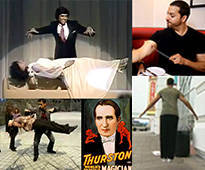| Recent Featured Videos and Articles | Eastern “Orthodoxy” Refuted | How To Avoid Sin | The Antichrist Identified! | What Fake Christians Get Wrong About Ephesians | Why So Many Can't Believe | “Magicians” Prove A Spiritual World Exists | Amazing Evidence For God | News Links |
| Vatican II “Catholic” Church Exposed | Steps To Convert | Outside The Church There Is No Salvation | E-Exchanges | The Holy Rosary | Padre Pio | Traditional Catholic Issues And Groups | Help Save Souls: Donate |  |









 " />
" /> " />
" /> " />
" /> " />
" /> " />
" />




Antibiotic-Resistant MRSA ‘Superbug’ Found In US Homes According To Study
atlanta.cbslocal.com An anti-biotic resistant “superbug” that has long affected hospitals and other health care locations around the world has now found a new “reservoir” location: inside U.S. homes. Methicillin-resistant Staphylococcus aureus (MRSA) is a bacteria that is resistant to many of the strongest antibiotics, and although recent prevalence has been limited to hospitals and nursing homes, a new study of 161 New York City residents who contracted the MRSA infections finds that the these people’s homes were “major reservoirs” for the bacteria strains, HealthDay reports. The Centers for Disease Control and Prevention notes that in communities outside of health care settings, most MRSA strains are skin infections that are spread by physical contact, such as the sharing of towels or razors. Athletes, military barracks, prisons and other close-quarter living areas are at an increased risk of contracting and spreading the bug. In medical facilities, MRSA causes life-threatening bloodstream infections, pneumonia and surgical infections. But the new study shows that the MRSA has spread into average U.S. homes. “What our findings show is it’s also endemic in households,” lead researcher Dr. Anne-Catrin Uhlemann, of Columbia University Medical Center in New York City, tells HealthDay, from the study published in the Proceedings for the National Academy of Sciences. According to a report released by the CDC last September, more than 2 million Americans get drug-resistant infections each year. And about 23,000 die from these diseases that are increasingly resistant to the strongest antibiotics that doctors use to fight the infections. Uhlemann and fellow researchers took samples from those affected by MRSA strains along with samples of a comparison group of people how had not fallen ill. The researchers then took samples from these patients’ household surfaces and other social contacts to see if the bacteria had spread. Ultimately, the research showed that many homes outside of just those affected by MRSA were “major reservoirs” for the MRSA strain, USA300, which HealthDay notes is the primary cause of MRSA infections in communities throughout the country. Bedding, clothes and other everyday surfaces used by someone affected by MRSA are suggested to be cleaned by bleach and hot water, although Uhlemann says the role of surfaces in transmitting the disease is not “well delineated.” “We can’t just treat the person with the infection,” Uhlemann told HealthDay. “We have to attempt to remove the (MRSA) colonization from the home,” and another MRSA expert not involved in the study added that the new study “confirms what we’ve suspected all along.” Correct bandaging, protection of wounds, and hand-washing were suggested by experts as the best ways to protect family members and others who one may come in physical contact with regularly, thereby spreading the bacteria to others. The CDC has estimated that nearly one-in-three people carry staph bacteria in their nose, and typically feel no symptoms of sickness. About 2 percent of people carry MRSA. to read more: atlanta.cbslocal.com
Sign up for our free e-mail list to see future vaticancatholic.com videos and articles.
Recent Content
^